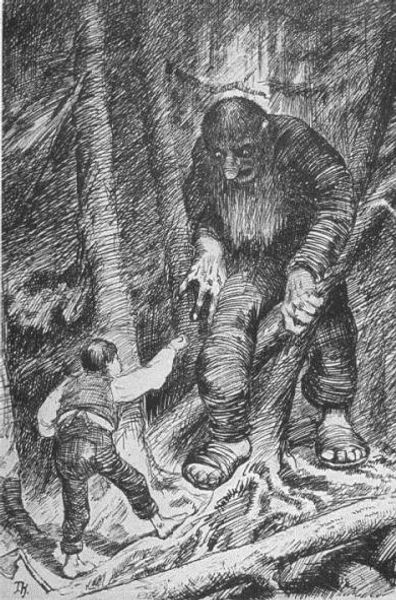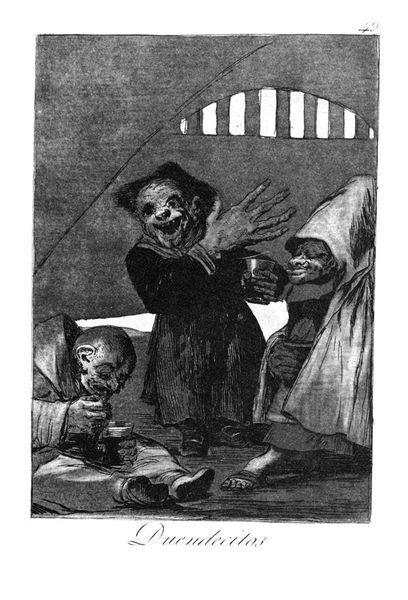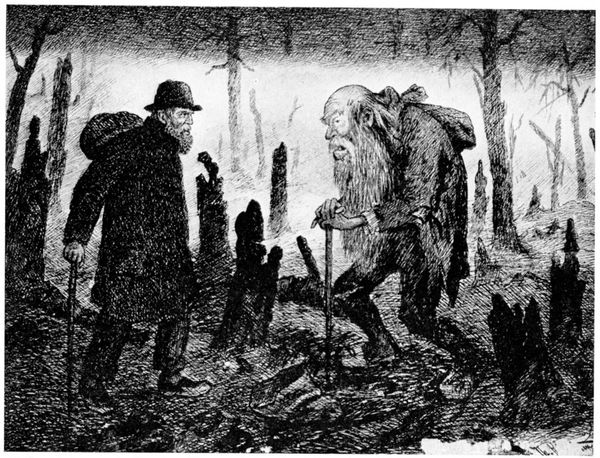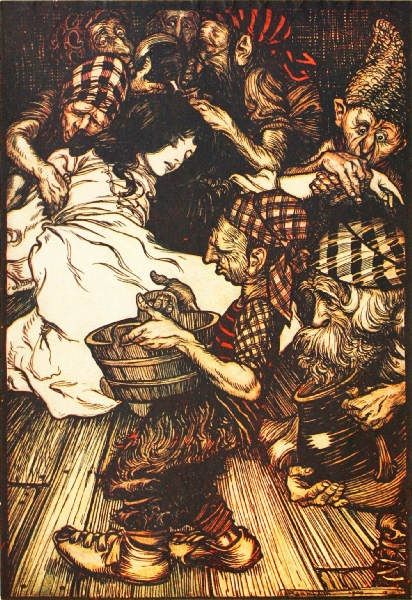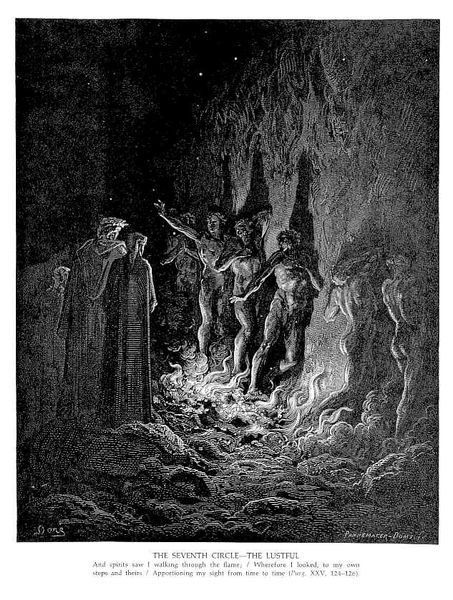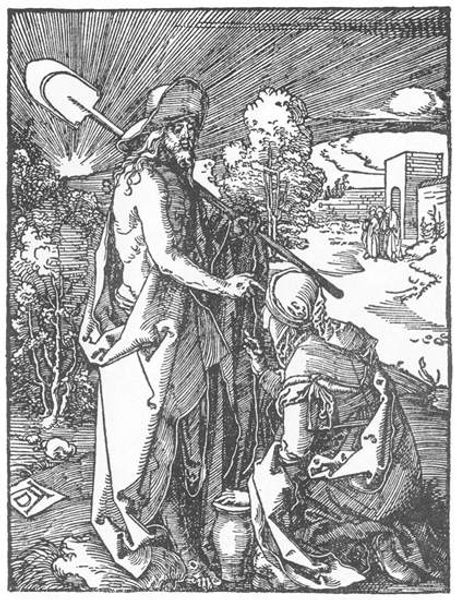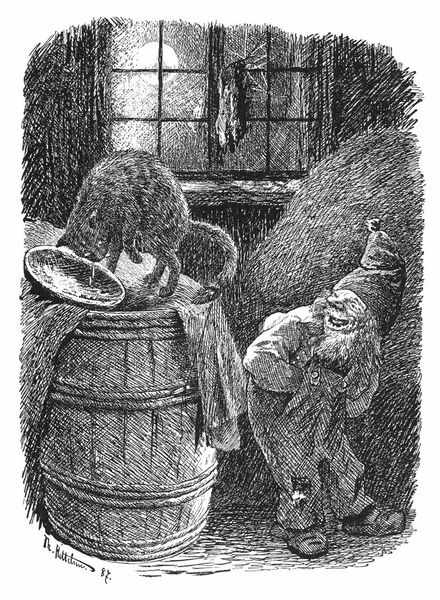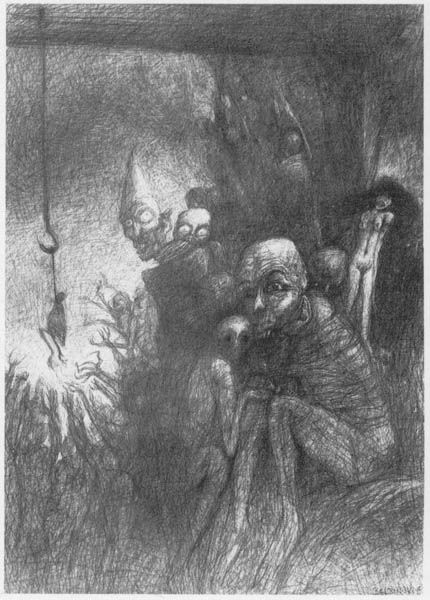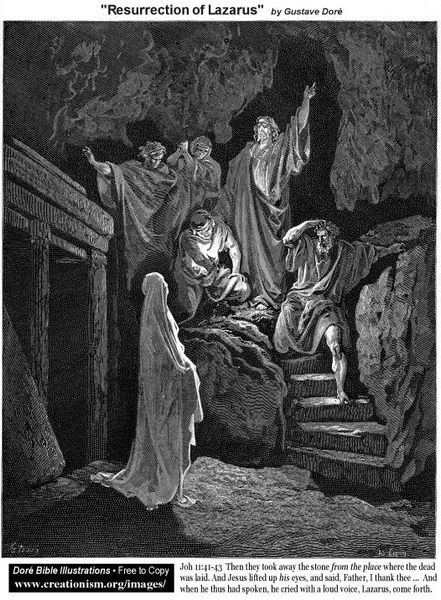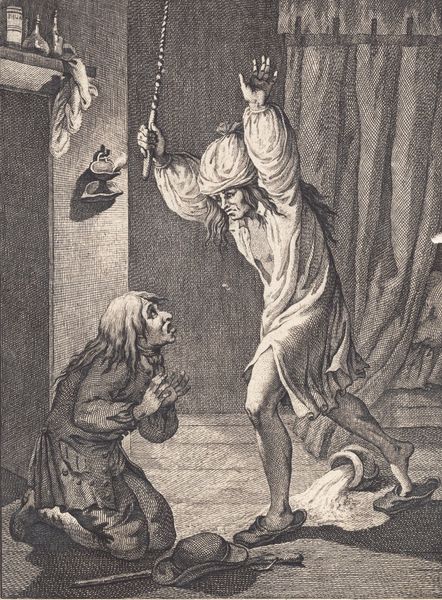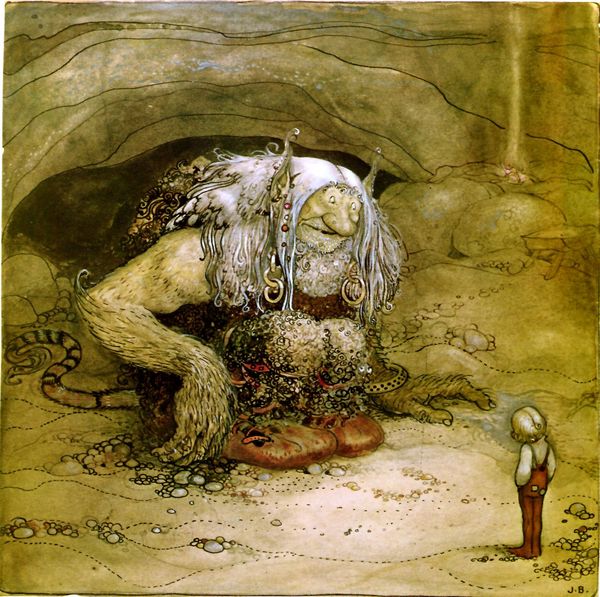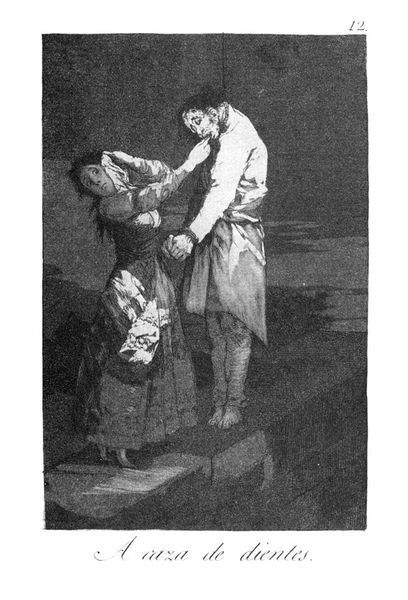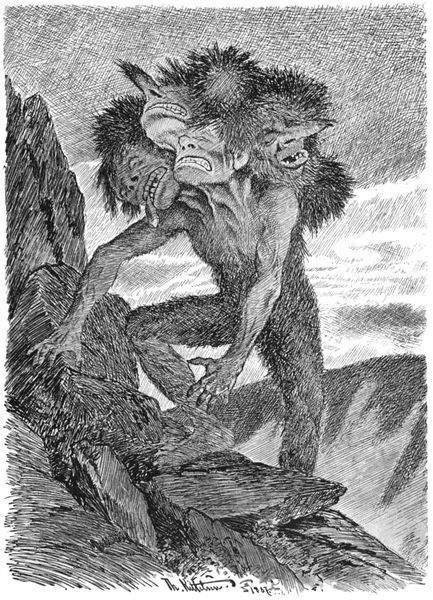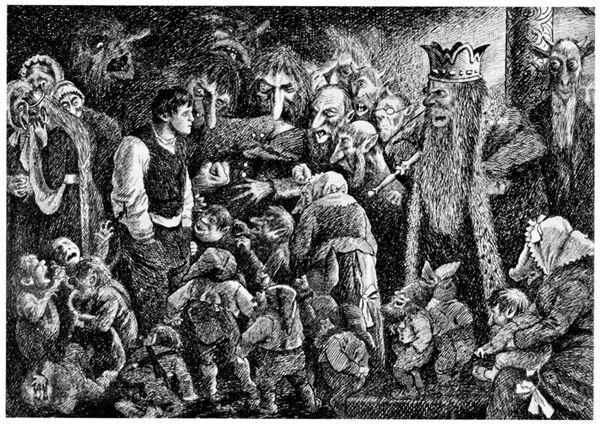
drawing, charcoal
#
drawing
#
narrative-art
#
fantasy-art
#
charcoal drawing
#
figuration
#
charcoal art
#
black and white theme
#
black and white
#
charcoal
#
northern-renaissance
Copyright: Public domain
Curator: The artwork before us, titled "Foreldrestolthet," or "Parental Pride," is a charcoal drawing by Theodor Severin Kittelsen. Even without a specific creation date, we can already see the narrative at play. What are your initial thoughts? Editor: Immediately, I'm struck by the contrast between the apparent sweetness of the title and the grotesque figures depicted. There's a definite unsettling, fairy-tale mood here, almost like a darker, folkloric interpretation of family life. It certainly inverts common representation of parenthood. Curator: Yes, and that contrast is precisely where Kittelsen situates this piece. Consider that Kittelsen often dealt with Norwegian folklore, where trolls and supernatural beings occupied a distinct space in the social consciousness. By placing these monstrous figures in a scene of apparent domestic pride, he invites viewers to question idealized notions of family and beauty, which might have roots to other societal factors, such as politics or identity. Editor: It makes one wonder about the societal values and anxieties present at the time it was drawn. Are we meant to sympathize with these trolls, or is this social commentary disguised as a children’s story? Looking closer, the setting feels deliberately claustrophobic, intensifying that disquieting emotion. What role did folklore and public life play in the conception of art? Curator: The cultural background certainly shaped its reception. There were rising nationalist sentiments at the time and the increasing professionalization of the artist and illustrator. By portraying trolls as family members, he's challenging traditional beauty standards, and arguably, commenting on contemporary discussions surrounding race, nationhood and what truly makes someone part of the national collective identity. It challenges the idea of what a "family" looks like, a sentiment that remains relevant and even more visible today, against political agendas seeking to marginalize people of color, LGBTQ+ or disabled peoples. Editor: It certainly gives me pause for thought. Thank you for the illuminating analysis. Curator: Likewise, your insights into its visual language greatly contribute to appreciating Kittelsen's craft and his subversive agenda.
Comments
No comments
Be the first to comment and join the conversation on the ultimate creative platform.
